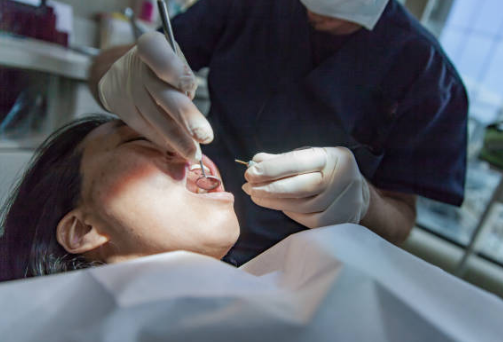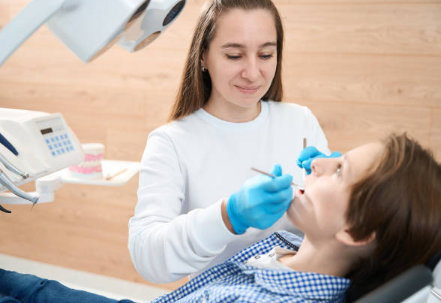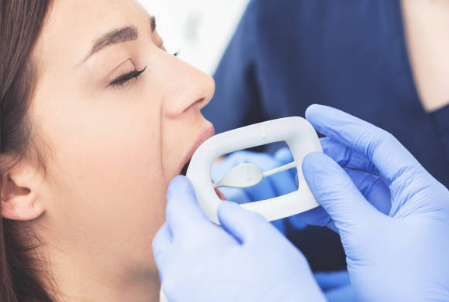How Long To Keep Gauze In After Tooth Extraction? All Facts You Should Know
For 30 to 45 minutes, apply some pressure to the gauze and leave it on the surgical area. If you’re still bleeding after 30 to 45 minutes, remove the gauze and change it out for a fresh piece. Make sure the gauze is placed directly on the surgical site. Continue reading, you will learn more facts about dos after tooth extraction.
Table of Contents
How Long to Keep Gauze in After Tooth Extraction?
Your dentist may apply gauze to the extraction site to help stop any bleeding after the wisdom tooth or teeth have been removed, as was previously mentioned.
Your dentist will instruct you to very gently bite down on the gauze to maintain pressure on it and hold it in place for approximately 30 to 45 minutes.
If there is any bleeding, after 30 to 45 minutes, you should take off the gauze and change it for a fresh, clean one. Make sure the gauze is securely in place and is applied to the area where the tooth or teeth will be extracted.
You should now have completely stopped bleeding if you keep the gauze in place for another hour. If not, try the procedure once more. If the bleeding persists despite your efforts, consult your dentist.
Instructions for Post-Operative Tooth Extraction?
For the Remainder of the Day:
- Avoid spitting; instead, swallow your saliva or wipe your mouth with a tissue as necessary.
- A drinking straw should not be used. Straighten out the cup and sip.
- Do not smoke.
- Avoid touching the surgical area with your tongue or fingers.
Smoking, spitting, using a straw, prodding the surgical area, and smoking can dislodge the blood clot that is forming and result in bleeding from the area. Infections and dry sockets are also probabilities that can rise when smoking.
Diet:
As soon as the local anesthetic wears off, you can eat soft foods like mashed potatoes, pasta, cottage cheese, soup, or scrambled eggs. However, for the first few days, you might only feel like eating ice cream or drinking cool liquids. For the first week following surgery, kindly refrain from using a straw when drinking.
As soon as you feel ready, you can get back to your regular diet, but it is advised that you stay away from crunchy foods like popcorn, chips, and peanuts for two to three days and avoid carbonated beverages., for 2 weeks after surgery.
Finally, please stay well-nourished and hydrated.

Oral Hygiene:
Tomorrow, you can begin gently rinsing with warm salt water (one teaspoon of salt to eight ounces of water). of warm water). Perform this for a week, both before bed and after meals. For the first week or so, avoid using mouthwashes with alcohol in them because they will burn. If you get food in a tooth socket, do not use a Waterpik® or toothbrush; we will help you rinse and give further instructions at your follow-up visit. Either tonight or in the morning, brush your teeth, taking care to avoid the surgical area. Do not spit or rinse firmly; instead, be gentle.
Sedation and General Anesthesia Patients:
For the remainder of the day, if you were under anesthesia during your procedure, you should be watched over by an adult.
Additionally, you might experience touch sensitivity at the IV site and even get a tiny bruise. Tenderness in the area might be relieved by using a heating pad and elevating your arm (by placing it on a pillow). Please call your doctor if the pain persists or the IV site becomes swollen.
Activity:
As soon as you stop using narcotic painkillers, you are free to return to your regular activities. When it comes to exercise and leisure, start out slowly and build up to your usual level of activity over a few days.
Please adhere to these guidelines as closely as you can. They are made to facilitate quick and comfortable healing.
Medications:
Most likely, you received one or more prescriptions for medicines. Take all prescription drugs as recommended on the bottle. If you have severe diarrhea or nausea, or if you have trouble swallowing pills, call us.
Antibiotics: Till the bottle is empty, keep going. Do not quit halfway.
Pain Medicine: For the first 24 hours and as needed after that, it is typically necessary to take narcotic painkillers on a schedule (every 4–6 hours). Do not drive, swim, operate machinery, or consume alcohol while using narcotics because these activities can make you drowsy.
You may wean yourself off of the narcotic medication and substitute 500 mg of acetaminophen (Tylenol®).
You may take 600 mg of ibuprofen, while awake, once every six hours for the first four to five days if instructed to do so.
Sutures:

The sutures used during your procedure, unless otherwise instructed, are dissolvable and will naturally dissolve. This usually happens in the first week following surgery, but the exact timing varies from 4 to 10 days.
Swelling:
After oral surgery, the majority of patients will experience some swelling. Every patient experiences it differently and it can be mild or severe. Prior to beginning to decrease, the swelling may get worse for the first 24 to 48 hours. It might continue for a few days. On the face, some bruising might also appear.
- Use an ice pack on the cheek or face next to the surgical site. As you get ready for bed, keep it on for 15 to 20 minutes, then turn it off for 10 minutes. The following day, start over.
- Sleep with your head slightly elevated (over your heart). This will prevent swelling.
- On the third day, switch to moist heat instead of ice packs. The swelling will decrease more quickly as a result.
Bleeding:
After removing a tooth surgically, some minor bleeding is normal. Within an hour or two of surgery, it will typically stop and quickly diminish. It’s normal to ooze a little bit, and it might do so for several hours.
- For 30 to 45 minutes, apply pressure (biting) to the gauze over the surgical area.
- If you are still bleeding after 30 to 45 minutes, remove the gauze and replace it with a fresh piece. Being sure that the gauze is placed directly on the surgical site is crucial. The bleeding should stop after applying strong pressure for another hour.
- Utilize a moistened tea bag in place of the gauze if, after three tries, you discover that it is ineffective. Tea’s tannic acid will aid in the formation of a clot that will stop the bleeding.
- Make an office call if all else fails.
What Does a Wisdom Tooth Removal Procedure Entail?
Although no one looks forward to going to the dentist, especially to have a tooth pulled, the good news is that wisdom tooth removal is a common and relatively painless procedure that your dentist could probably complete with their eyes closed.
A dentist or a trained and experienced surgeon will carry out the procedure. To assess the severity of your problem and determine the type of procedure that will be needed, an X-ray of your mouth will first be taken.
In order to numb the tooth and the surrounding area, a local anesthetic injection will be administered next. Once the tooth is accessible, your dentist will make a tiny incision in the gum. The tooth will then be painstakingly removed, and the area will be meticulously cleaned to help lower the risk of infection.

If there was an incision, it would be closed with stitches that would dissolve. Additionally, your dentist might apply gauze to the extraction site, instructing you to bite down on it to keep pressure on it and hold it in place to stop the bleeding.
What to Do After Wisdom Tooth Removal?
If you have undergone wisdom tooth removal, be sure to follow the following steps for the remainder of the day:
- Do not spit
- Do not smoke
- Do not use a drinking straw
- Resist the urge to touch the surgical area as bacteria on your fingers could lead to an infection
What to Eat After Wisdom Tooth Removal?
It goes without saying that you will need to be extremely cautious when eating and chewing after having your wisdom tooth(s) removed.
You must eat, of course, but avoid foods that are hard and crunchy and choose soft foods instead, making sure to chew on the opposite side of your mouth.
Oral Hygiene
The biggest danger you face after having a tooth or teeth removed is infection. It’s crucial to practice good oral hygiene because the last thing you want is for bacteria to enter the open wound and result in an infection.
Every day, spit the warm salt water out of your mouth and rinse it again. As a result, any harmful bacteria that may have accumulated will be destroyed and the wound will be kept sterile.
Medication
You might want to use painkillers if you discover that the pain is especially severe. Discuss painkillers with your dentist, and make sure to never take more of them than the daily dosage is intended to contain.
Conclusion on Keep Gauze in After Tooth Extraction
Keep the gauze pad covering the surgical area in place for about 45 minutes, or until you have something squishy to eat or drink, like a milkshake or smoothie. In order to eat or drink, you can remove the gauze; once you’re done, you can replace it as necessary. If the bleeding has stopped after 45 minutes, you don’t need to use gauze anymore. If not, keep using the gauze until the bleeding has stopped or significantly decreased.